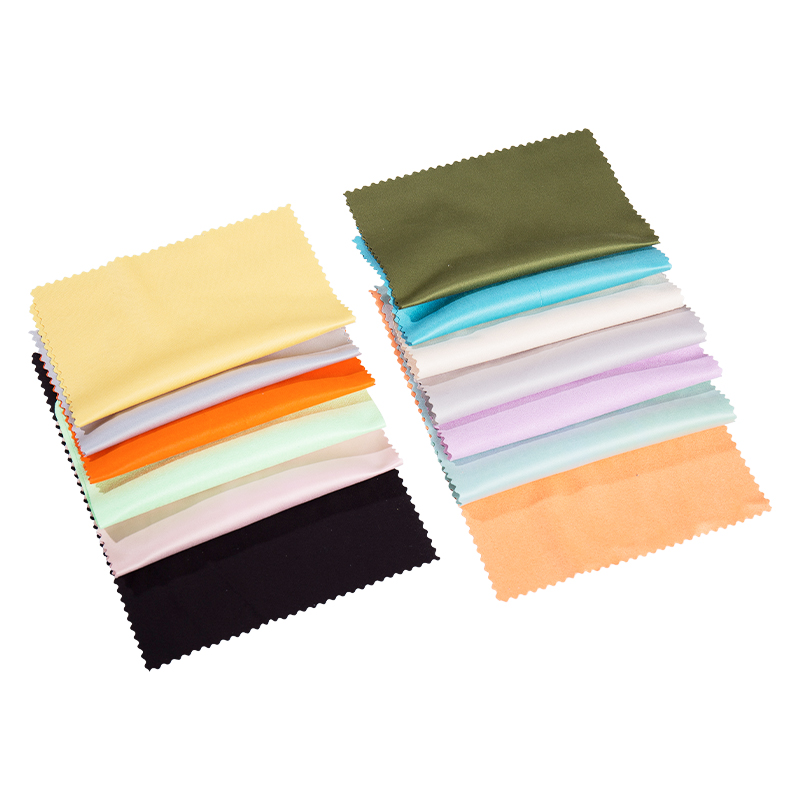Glasses microfiber cloth ave become a staple in cleaning, particularly for eyewear, due to their remarkable properties, including high water absorbency. This quality not only facilitates quick drying but also enhances the cloth's ability to capture dirt and prevent fouling. Understanding these aspects is crucial for effective eyewear maintenance.
Microfiber cloths are composed of ultra-fine fibers, often made from polyester and polyamide. These fibers are significantly finer than human hair, resulting in a vast surface area that can absorb moisture efficiently. The structure allows these cloths to hold multiple times their weight in water, making them exceptionally effective at removing moisture from lenses.
Due to their high absorbency, microfiber cloths dry quickly after use. This is advantageous because it prevents water from lingering on the lens, which can lead to unsightly water spots or mineral deposits. Quick drying also means that the cloth is ready for use again in a short amount of time, making it convenient for users who need to clean their eyewear frequently.
When using a microfiber cloth to clean glasses, the rapid absorption of water ensures that the surface remains clear and streak-free. This efficiency is particularly noticeable when dealing with water-based residues, as the cloth can quickly lift and trap moisture along with dirt particles.
The anti-fouling properties of microfiber cloths are intrinsically linked to their structure and composition. The unique arrangement of fibers creates microscopic pockets that effectively capture and retain dirt and oils.
Microfiber cloths can trap dirt and grime within their fibers. The fine structure means that even the tiniest particles, such as dust and smudges, can be easily picked up. When wiping the lens, the fibers act like tiny hooks, grabbing onto contaminants without redistributing them back onto the surface.
Traditional cleaning cloths can sometimes scratch delicate lenses if they contain abrasive materials. In contrast, microfiber cloths are designed to be soft and non-abrasive, ensuring that they clean without causing damage. This quality is essential for preserving the integrity of high-quality lenses.
In practical use, the combination of high absorbency and anti-fouling ability makes microfiber cloths ideal for cleaning eyewear:
Regular use of microfiber cloths can significantly enhance the clarity and cleanliness of glasses, making them more comfortable to wear and improving vision. Their ability to capture dirt while drying quickly ensures that users can maintain clear lenses throughout the day.
Because microfiber cloths can be washed and reused multiple times without losing their effectiveness, they provide a cost-effective cleaning solution. Proper care, such as washing them without fabric softeners, helps maintain their absorbency and dirt-capturing capabilities over time.
The high water absorbency of microfiber cloths plays a crucial role in their performance as a cleaning tool for glasses. Their quick drying ability ensures that lenses remain clear and free from water spots, while their anti-fouling capacity allows them to capture and retain dirt and oils effectively. Together, these properties make microfiber cloths an indispensable tool for anyone looking to keep their eyewear clean and in optimal condition.

The microfiber cleaning cloth is made of 80% polyester and 20% polyamide fine fibers for added softness, tightly woven and brushed.
High-density woven construction creates a large surface area for professional-grade cleaning and enhanced dust removal. Even at the optical level, it leaves no marks, scratches or lint.
Excellent capillary effect ensures fast drying after washing.
High-strength synthetic filament ensures long-lasting durability.
Microfiber cleaning cloths are designed to remove dust, grease, smudges, fingerprints and dirt from delicate surfaces such as glass, lenses, cell phones, screens, LCDs, products, silverware and watches.
Compact packaging: Individually packaged in OPP bags, easy to carry, suitable for putting in wallets, pockets or backpacks.














